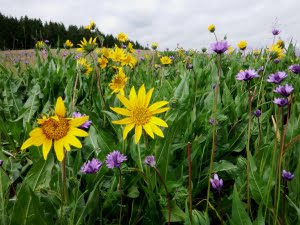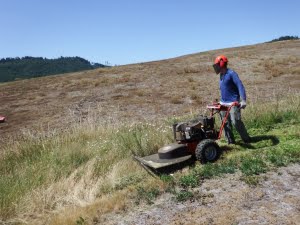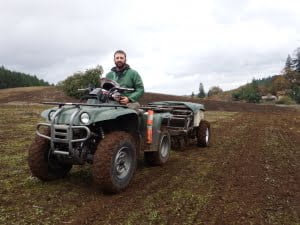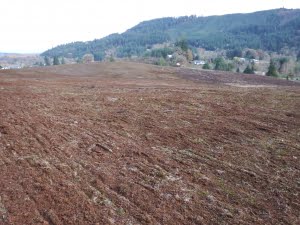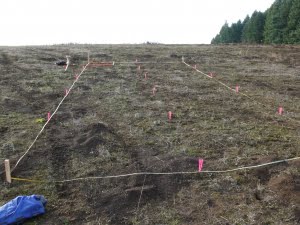Seeding the Prairies – Part 2
The Institute for Applied Ecology (IAE) is collaborating with Oregon Department of Transportation (ODOT) to restore their 20 acre Witham-Gellatly property near Philomath.
Restoration at the upland prairie will mitigate for incidental impacts to Kincaid’s lupine (Lupinus oreganus) and Fender’s blue butterfly (Icaricia icarioides fenderi) during routine road maintenance activities, as outlined in ODOT’s Statewide Habitat Conservation Plan.
Witham-Gellatly was intensively grazed by cattle for many years and was dominated by non-native annual grasses and weedy flowering plants. However, there are small remnant patches of the threatened Kincaid’s lupine, as well as a few other native forbs.

A remnant population of Kincaid’s lupine is at Witham-Gellatly.
Small patches of ookow (Dichelostema congestum) and narrowleaf mule’s ears (Wyethia angustifolia) make a nice show in spring.
Three years of site preparation included mowing, prescribed fire and herbicide treatments.
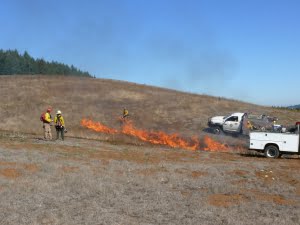
A prescribed fire, conducted by Oregon Department of Forestry in October 2014, helped reduce weedy thatch.
Andy Neill, IAE’s restoration technician, mowing a grassy gully in July 2015.
In mid-November Zac Hales from ODOT sowed native seed with a Dew Drop Drill towed behind an ATV. Steep ground and gullies were seeded by hand by Peter Moore, one of IAE’s Restoration Ecologists.
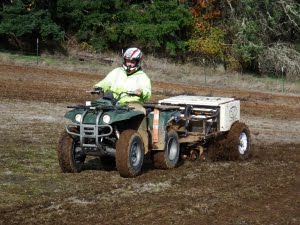
Dew drop drill at Witham-Gellatly, November 2015. Small disks lightly till the soil while seed is dropped from a hopper at a measured rate.
Zac Hales of ODOT with the ATV and the Dew Drop Drill.
Seventeen species of native forbs, including toughleaf iris (Iris tenax), dwarf checkerbloom (Sidalcea virgata), and grand collomia (Collomia grandiflora), were included in the mix, along with Roemer’s fescue (Festuca roemeri) and a few sedges and rushes. Follow-up seeding in 2016 will establish more forbs and other native grasses. Seed for the project came from nurseries such as Heritage Seedlings, Pacific Northwest Natives and the Corvallis Plant Materials Center (Natural Resources Conservation Service).
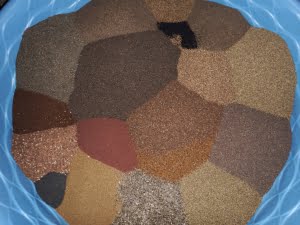
Seeds of native plants come in all shapes, sizes and colors. The pictured forb seeds make for a colorful palette as they are mixed before adding to the drill.
Peter Moore adding seed to the drill hopper
The upland prairie at Witham-Gellatly after sowing.
Plots were set up to compare the success of planting Kincaid’s lupine seed or plugs. The results will help plan for a more widespread planting of lupine in 2016.
Ultimately, we hope that Fender’s blue butterfly will be attracted to Witham-Gellatly by the presence of Kincaid’s lupine, their primary larval host plant, as well as an abundance of nectar-producing plants.
